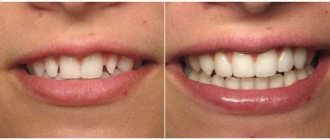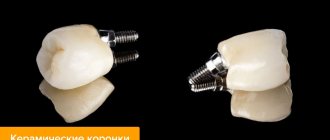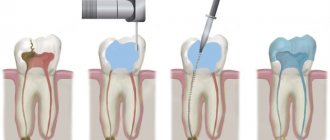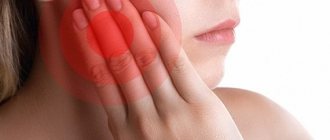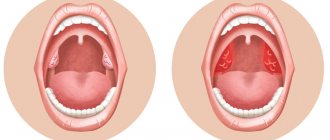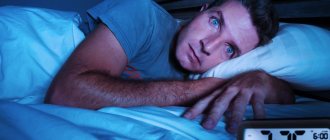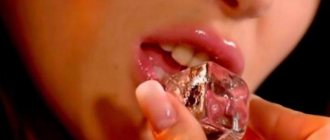Ear pain is a phenomenon that many people of different ages have experienced. Ear pain is accompanied by discomfort, strong, constant, unpleasant, exhausting sensations, and has a negative impact on sleep patterns and quality of life. For this reason, the question of how to get rid of it comes to the fore.
Practice shows that people experiencing ear pain make many mistakes, which increases the likelihood of complications and negative consequences. In such cases, an ENT doctor is needed. The specialist will conduct a diagnosis and prescribe a course of treatment appropriate for the specific case.
To do this, you can contact our clinic and receive high-quality medical services. Our prices for paid medical services are the most affordable in Rostov-on-Don, and the otolaryngologist provides consultations for both adults and children.
Briefly about the ear
Forming an idea of the structure of the ear allows you to understand in which parts pain may occur and what causes it. The organ is one of the most complex in the human body; it consists of three sections:
- Outer ear. This area includes what is accessible for visual inspection without the use of additional devices. We are talking about the concha and the visible part of the ear canal;
- Middle ear. This part is hidden from view and includes the tympanic cavity and the auditory ossicles. Protection of this section is provided by the temporal bone;
- Inner ear. This is the most complex section; its components are represented by bone canals. Its task is to convert incoming sounds into impulses that are transmitted to the brain and recognized there. Also, this department includes the vestibular apparatus, which is responsible for human coordination and balance.
Why do earrings hurt my ears?
There are several basic reasons why earrings hurt your ears:
- Problematic puncture. Ears should only be pierced in professional salons where specialists work and strict rules for sterilizing instruments have been established. But even with a professional approach, the choice of puncture point may not be entirely correct - human anatomy sometimes presents incredible surprises.
- Incorrect care. Most often, the ear hurts from the earring due to improper care. A person treats wounds irregularly, uses inappropriate means, and touches his ears with dirty hands. Here we can also mention the excessive haste in replacing primary stud earrings with other jewelry.
- Traumatization. In the first days, wounds are especially painful and vulnerable. You can injure the puncture site even when combing your hair or changing clothes. In the future, the main risk factor is wearing very massive and voluminous jewelry (for example, gypsy rings or long pendants), especially during active sports and physical labor.
- Diseases. Some diseases are absolute contraindications to ear piercing. Among the most common are diabetes mellitus, various blood diseases, a tendency to tumors and the formation of rough scars.
- Allergic reactions. Believe it or not, there are rare cases of allergies even to medical steel, which is used to pierce the ears with a gun! What can we say about other metals, even noble ones? If your ear hurts from a gold earring, most likely the alloy contains ligatures that provoke allergic reactions.
- Wrong selection of earrings. Earrings that are too massive always carry some risk (the holes are stretched and more often injured), so it is not recommended to wear them every day - only on special occasions. Problems can also arise if you choose the wrong lock: for example, an English clasp requires selection according to the parameters of the eyelet.
Under no circumstances should you pierce the ears of friends and relatives without special knowledge and skills. Who can guarantee that the needle is absolutely sterile and the puncture will not be in the problem area of the lobe?
What to do if earrings hurt your ears?
The first thing to do is take off the earrings, without hoping that everything will return to normal on its own. If your earlobe hurts from an earring, but the wound has healed a long time ago and there are no signs of inflammation, the reason may lie directly in the jewelry. Most often, such reactions are provoked by jewelry.
Noble metals (silver, gold, platinum) are inert and cannot cause allergic reactions, but they are not used in their pure form to make jewelry (too soft). All kinds of alloys are added to them: copper, nickel and other metals. This is what causes similar reactions in some people.
If after removing the earrings the pain and redness go away, then you just need to choose another piece of jewelry. Otherwise, you must first take measures to eliminate inflammation (more on them below).
Ear pain: causes
Ear diseases are a common problem that many people experience, regardless of age. Such pathologies can be caused by a large number of reasons. Each disease requires a different approach to treat. For this reason, there is a danger in self-diagnosis of the disease and treatment. If you experience ear pain, the first thing to do is consult a doctor.
Pain in the outer ear
Practice shows that the main cause of diseases in this department is infections. The outer ear is not protected, so the risk of microorganisms entering is high. But even taking into account this fact, the immune system copes with its functions and neutralizes the threat.
Another reason could be injury. Improper cleaning of the ears, blows and injuries provoke the occurrence and spread of the inflammatory process.
Among the symptoms of damage to the external part are:
- Itching in the ear;
- Acute pain in the ear;
- Movement of the jaws is accompanied by increased pain;
- Impact on the sink leads to increased discomfort.
Also, pain in the outer ear can be caused by the following diseases:
- Otitis externa. The cause is bacteria;
- Furuncle (ulcer);
- Injuries. The result of various injuries. Very often, pain in a child’s ear can be caused by foreign objects that children manage to insert into their ears.
It is important to pay attention to the fact that pain in the outer ear may indicate the presence of cerumen, a tumor, or a foreign object. In some cases, such symptoms are characteristic of eczema.
Middle ear pain
This department directly interacts with the outer ear and nasopharynx. For this reason, the disease can be transmitted to the middle ear. Pathological processes developing in the middle ear have a negative impact on the condition and functioning of other organs and tissues.
Among the symptoms indicating the presence of pathology in the middle ear are:
- Shooting pain in ear;
- Sensation of pulsating in the ear;
- Hearing problems in the affected ear;
- Distortion of the perception of one's own voice.
Pain in the ear in this area may indicate that the following pathologies are highly likely to develop:
- Acute inflammatory processes in the middle ear;
- Tumors in the area of the tympanic cavity;
- Trauma and disruption of the integrity of the eardrum;
- Problems with the functioning of the auditory tube.
In some cases, severe ear pain may occur after going to the pool. The pain spreads both to the outer ear, where the infection could have entered, and to the middle ear, where the pain is caused by strong water pressure when diving to depth.
Problems in the inner ear
In most cases, damage to the inner ear is not accompanied by pain. This significantly complicates the detection of pathologies.
Symptoms of internal disease include:
- Problems with coordination arise;
- Difficulty maintaining balance;
- Nausea;
- Extraneous or uncharacteristic sounds in the ears;
- Headaches on a regular basis;
- Progressive hearing loss;
- Dizziness.
The list of common inner ear diseases includes:
- Labyrinthitis (infectious and inflammatory process);
- Hearing loss (impaired functioning of the apparatus responsible for the perception of sound waves);
- Meniere's disease (increased pressure in the labyrinth caused by an increase in labyrinthine fluid);
- Otosclerosis (pathological bone growth).
It is important to note that all of the above reasons are relevant for all ages.
Ear pain causes not related to the ears
In some cases, acute pain in the ear can occur without pathological processes in the auditory organs. Pain can be caused by diseases occurring in neighboring organs.
Among such processes occurring in neighboring organs are:
- Dental problems;
- Trigeminal neuralgia;
- Inflammation of ENT organs;
- Tumors of the larynx, oral cavity, lower pharyngeal region;
- Inflammation in distant organs
- Diseases of the esophagus;
- Pathologies of the heart and blood vessels (heart attack);
- Degenerative pathologies of the cervical vertebrae.
The most optimal solution when you experience ear pain is if you are seen by a paid therapist (Rostov-on-Don) and excludes those diseases that cannot be treated by an ENT doctor, or, on the contrary, refers you to the right specialist in a timely manner.
We must not forget that only a doctor can correctly diagnose and, based on the anamnesis, as well as test results, make a diagnosis and begin treatment.
Inflammation after puncture
Punching the soft tissue of the lobe is a practically safe, but still traumatic operation. Therefore, most often the ear hurts after an earring piercing. The master should explain what to do immediately after the manipulation. He gives brief instructions on how to care for the canal, what earrings to wear and how often to treat the affected area.
However, even if you follow all the recommendations, your ear will hurt for some time. The healing process can take up to 6 weeks, depending on the individual characteristics of the body, and painful sensations will persist throughout this time. During the first days after the piercing, the earlobes will be red and swollen. This is normal as they swell after injury. But then the redness and swelling should go away.
If this does not happen, it means that some kind of infection has entered the canal, which caused an inflammatory process. If you do not fight it, then ulcers will begin to form, which will continue to spread.
- Why does the jaw hurt on one side when chewing near the ear: what does pain on the right and left mean, how to treat it?
Sometimes prolonged, longer-than-usual redness may be caused not by infection, but by other reasons, for example:
- severe injury to the earlobe due to the use of the wrong instrument;
- disorders of lipid metabolism in soft tissues;
- blockage of the canal with the secretion of sebaceous glands.
Such problems can be eliminated through careful care of the injured area. But if pus is visible and there is severe swelling that does not subside for a long time, then the matter is clearly an infection. And it is necessary to fight it.
Types of ear pain
Pain in the ears can manifest itself in different ways. The specificity of pain acts as one of the guidelines in determining pathology.
Nature and intensity of ear pain:
- Sudden pain. Accompanied by acute pain, it can be caused by injury or a foreign object;
- Progressive pain. It occurs against the background of pathologies with moderate dynamics of development. May indicate wax plug, inflammation in the ear canal;
- Severe pain in the ear, accompanied by throbbing. Character for boil, OVSU, injury;
- Stitching, sharp. The pain occurs periodically, bringing with it discomfort. The main reason is neuralgia;
- Blunt pain. Manifests against the background of diffuse otitis, may indicate the presence of sulfur plugs, inflammation of the middle section in a chronic form;
- Itchy pain. Relevant for those cases when we are talking about damage to the external part. May be caused by otitis media, disruption of the integrity of the ear canal, eczema;
- Intermittent. This kind of sensation is characteristic of radiating pain;
- When swallowing. Causes: OVSU, malignant tumors of the oral cavity and larynx, pharyngitis, tonsillitis.
What is “possible” and what is absolutely “not” for ear pain
If a child has ear pain, it is recommended to visit a doctor as an emergency. If you need an ENT doctor, you can make an appointment with him in our clinic.
How to reduce pain?
Folk remedies:
- Ammonia with camphor. The solutions are mixed. Gauze is dipped in the solution and placed in the ear for a few minutes, this allows you to get rid of pain;
- Decoction based on onions. Another way to get rid of pain. A warm decoction is used to wipe the auricle and ear canal. The result is a disinfecting effect and pain reduction.
An alternative option is to take a pain reliever. In some cases, the use of vasoconstrictor drops is allowed.
What not to do?
- Warm up the ear. This action may spread the infection;
- Taking antibiotics. This approach is ineffective and can cause damage to nerve endings;
- Use of medications “as advised.” The use of drops is prescribed only by a doctor based on examination and test data. Only a doctor will help resolve the issue of prescribing the optimal course of treatment for a child and an adult, taking into account the specifics of the clinical picture.
- “Folk” methods of a radical nature.
Our Heratsi Medical Center employs only experienced doctors with high professional training. We have high-precision equipment: an expert-class ultrasound machine, our own laboratory for working with analyses.
The cost of all services of the medical center can be viewed in the “Price” section or by calling the 24-hour hotline.
